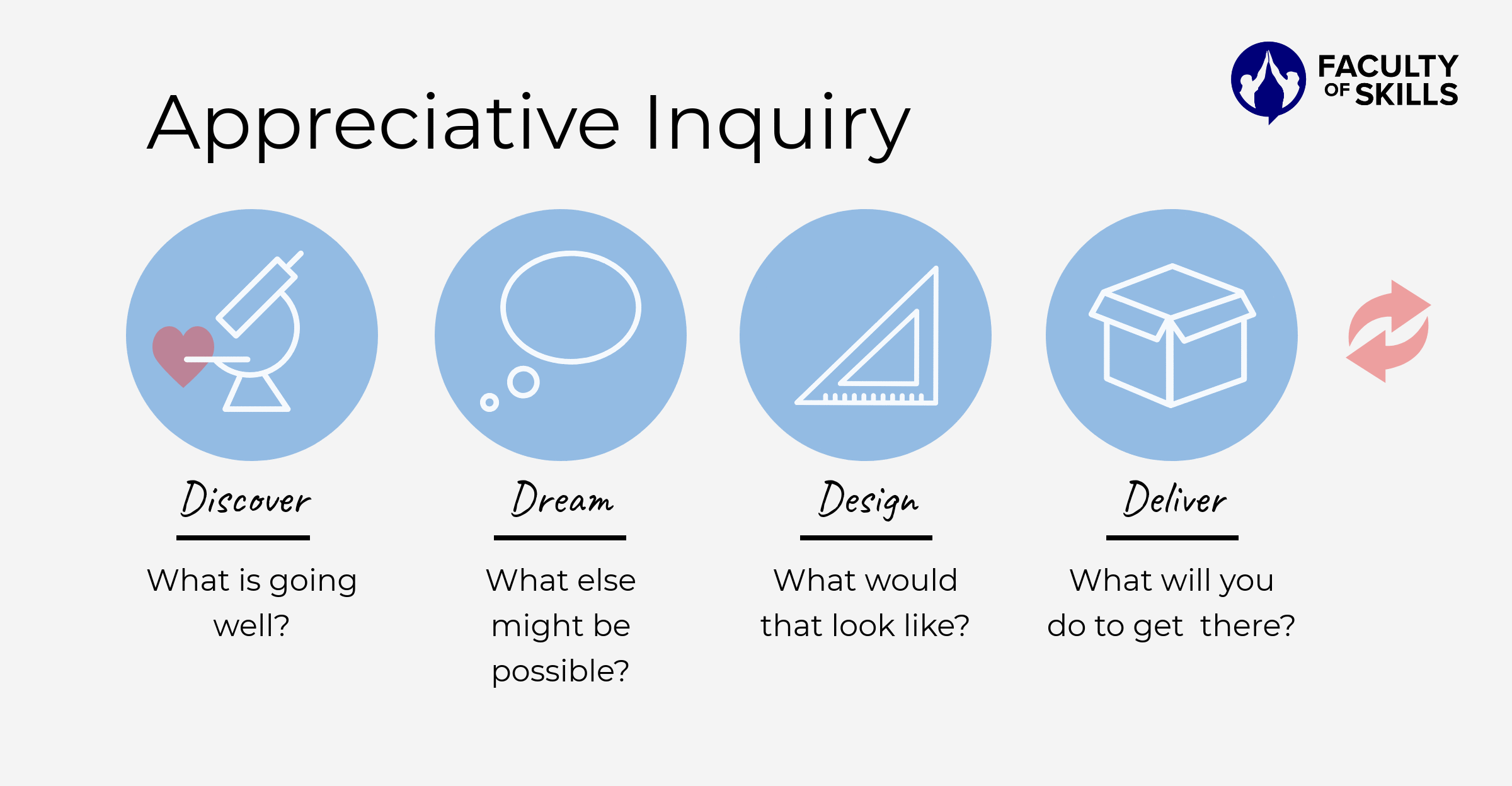
Appreciative inquiry: train yourself to consider what is going well
Geschreven door Henrieke Graven | April 16, 2019Focus on the positive. Consider what is going well. Don’t talk down to yourself or to another, but acknowledge what is going well. It sounds like something straight out of a self-help book. A bit too sugary? Maybe, but if you want your feedback to be impactful, it is the way to go. Appreciative inquiry puts the employee on a pedestal in order for them to be able to jump even higher from there.
Feedback: fight or flight
 Most organizations have now sensed that the classic performance review has become old-fashioned. What will take its place? In several places, feedback culture is high on the agenda. The idea is that employees improve if they receive feedback and hear what they could do better. An open and transparent culture where you can address each other is a worthy aim, however, according to a recent piece in Harvard Business Review, feedback has its pitfalls. The authors mention several reasons why (critical) feedback on the work floor is supposedly ineffective, for example, the receiver might go into fight or flight mode. The brain locks down and its capacity for learning is hindered. The effect: a terrible feeling. And that’s it.
Most organizations have now sensed that the classic performance review has become old-fashioned. What will take its place? In several places, feedback culture is high on the agenda. The idea is that employees improve if they receive feedback and hear what they could do better. An open and transparent culture where you can address each other is a worthy aim, however, according to a recent piece in Harvard Business Review, feedback has its pitfalls. The authors mention several reasons why (critical) feedback on the work floor is supposedly ineffective, for example, the receiver might go into fight or flight mode. The brain locks down and its capacity for learning is hindered. The effect: a terrible feeling. And that’s it.
Appreciative inquiry: beyond a nice compliment
So how should it be done? The method of appreciative inquiry could help. People need to hear what they are doing well. We learn most from feedback on what went well, so that we can continue in that direction. But even though a nice compliment works well, you don’t want to leave it there. Appreciative inquiry goes a step further. 
Discover - what is going well?
Address what makes you, as a manager, happy. And be sure to use examples: “What you did then, that’s what I mean.” Ask the employee positive questions and discover what is going well. What makes you happy? When do you excel? In what situations do you like to work?
Dream - what else might be possible?
Explore what would happen if the employee would develop further in that direction. What kind of impact would they have on colleagues and the organization?
Design - what would that look like?
In this step, get specific. Where else could the employee use these qualities? Where will this talent be useful? How should the employee use these qualities to handle difficult situations?
Deliver - what will you do to get there?
Make an action plan to use all of the potential.
The difference: what you focus on will grow
With appreciative inquiry you try to create a positive mindset by asking questions and visualizing a future together. Don’t focus on the problems and its origins, but on what is going well. Don’t evaluate everything that went wrong, but dream about what could be. It asks for a new way of collaboration and supervision. When the organization has mastered this, individual employees as well as teams can work on their strengths. So: what is going well?
Faculty of Skills developed a training program on appreciative inquiry for managers. You can practice your skills with online video role plays. Interested? Contact us!
